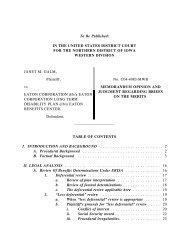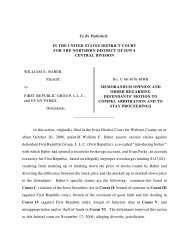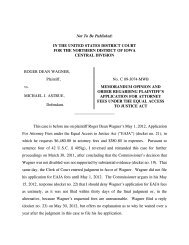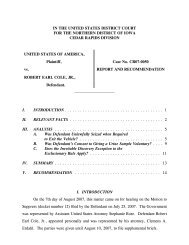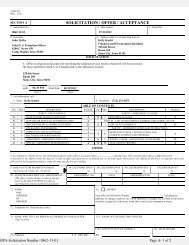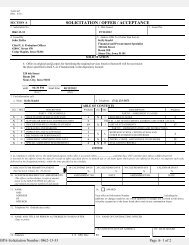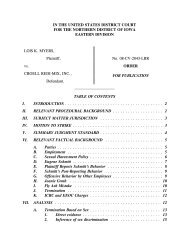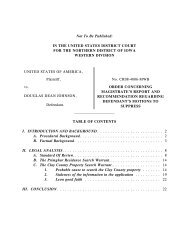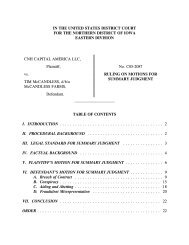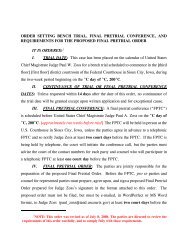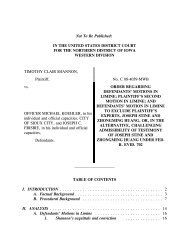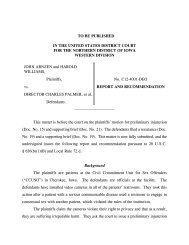IN THE UNITED STATES DISTRICT COURT FOR THE NORTHERN ...
IN THE UNITED STATES DISTRICT COURT FOR THE NORTHERN ...
IN THE UNITED STATES DISTRICT COURT FOR THE NORTHERN ...
Create successful ePaper yourself
Turn your PDF publications into a flip-book with our unique Google optimized e-Paper software.
Fuchs, 467 F.3d at 905 (affirming convictions for CSA violations arising from Internet<br />
prescription business). The fact the Indictment seeks to convict defendants involved in<br />
alleged illegal conduct arising from an Internet pharmacy as opposed to a “brick and<br />
mortar” pharmacy does not render the Indictment defective.<br />
G. Rule Of Lenity<br />
In Kanner’s Supplement, Kanner also argues the court should dismiss the Indictment<br />
pursuant to the rule of lenity. 7<br />
The rule of lenity requires ambiguous criminal laws to be<br />
interpreted in favor of the defendants subjected to them. This<br />
venerable rule not only vindicates the fundamental principle<br />
that no citizen should be held accountable for a violation of a<br />
statute whose commands are uncertain, or subjected to<br />
punishment that is not clearly prescribed. It also places the<br />
weight of inertia upon the party that can best induce Congress<br />
to speak more clearly and keeps courts from making criminal<br />
law in Congress’s stead.<br />
United States v. Santos, 128 S. Ct. 2020, 2025 (2008) (internal citations omitted).<br />
However, the rule of lenity only requires a court to “adopt the less punitive alternative if<br />
faced with two reasonable interpretations of a criminal statute and ambiguous<br />
congressional intent.” United States v. Brummels, 15 F.3d 769, 773 (8th Cir. 1994)<br />
(citing United States v. Freisinger, 937 F.2d 383, 391 (8th Cir. 1991) (emphasis in<br />
Brummels)). “‘The mere possibility of articulating a narrower construction [. . .] does not<br />
by itself make the rule of lenity applicable.’” Id. (quoting Smith v. United States, 508<br />
U.S. 223, 239 (1993)). The court finds the moving defendants’ alleged criminal conduct<br />
falls well within a reasonable interpretation of the CSA. In contrast, the interpretation of<br />
the CSA the moving defendants urge the court to adopt is not a reasonable one. As stated<br />
7 Kanner’s Supplement makes other arguments; however, they either re-hash or<br />
restate arguments discussed in Kanner’s Motion. The court need not repeat its conclusion<br />
in response to these repetitive arguments.<br />
23



